This step by step woodworking project is about how to build a 20×24 rectangular pavilion – free diy plans. I have designed this large backyard pavilion, so you can create a nice covered area for outdoor hanging out with family and friends. This structure is heavy duty, but please follow the building codes and hire a professional contractor if you don’t have the right skills to undertake the project on your own. Some modifications might be needed according to the local conditions, so read the codes with attention.
We recommend you to invest in the best materials you could afford. Therefore, you should buy weather-resistant lumber, such as pressure-treated lumber, cedar or redwood. If you use regular pine, I recommend you to apply the appropriate products to enhance its durability. Always take accurate measurements before adjusting the size of the components at the proper size. Drill pilot holes trough the components before inserting the wood screws, to prevent the wood from splitting. See all my Premium Plans HERE.
Made from this plan
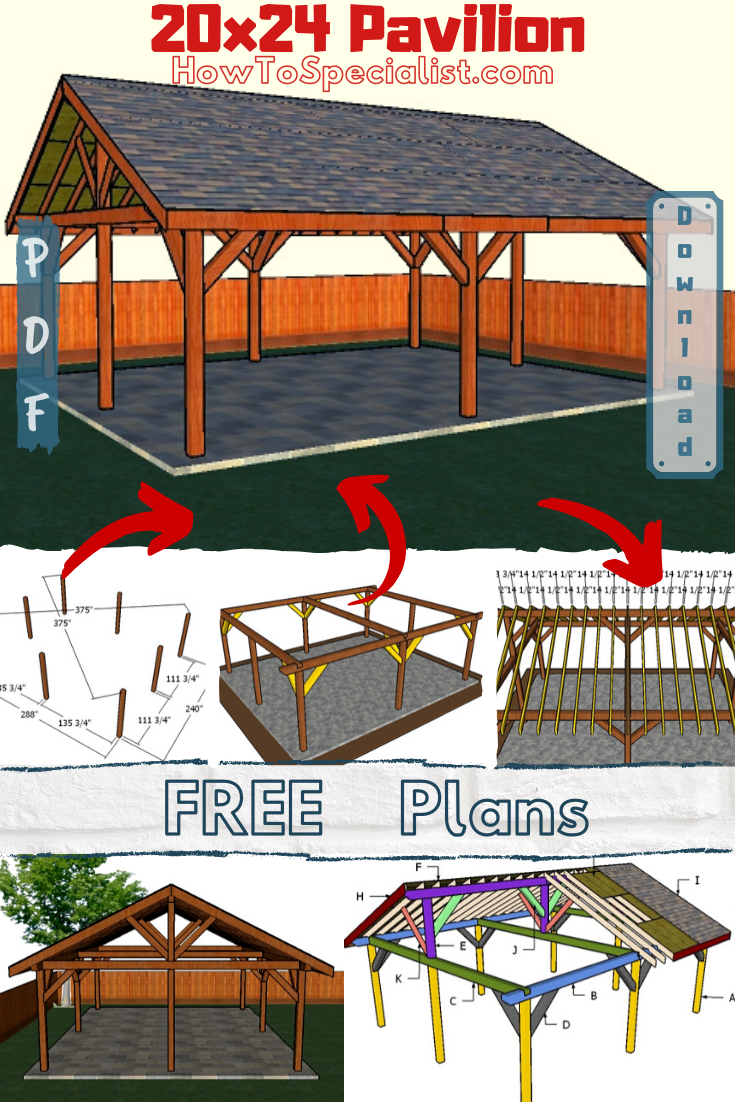
20×24 Pavilion – Free DIY Plans
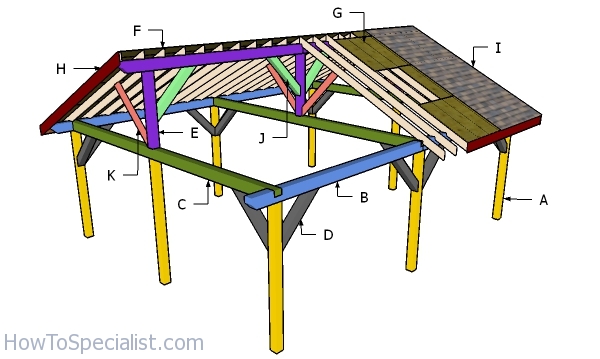
Building a 20×24 pavilion
Materials
- A – 8 pieces of 6×6 lumber – 94″ long POSTS
- B – 4 pieces of 6×8 lumber – 160″ long TOP RAILS
- C – 3 pieces of 6×8 lumber – 240″ long BRACES
- D – 14 pieces of 6×6 lumber – 42 1/2″ long BRACES
- E – 3 pieces of 6×6 lumber – 51 1/2″ long, 2 pieces of 6×8 lumber – 160″ long RIDGE BEAM
- J – 4 pieces of 6×6 lumber – 48″ long BRACES
- 19 pieces of 6×6 lumber – 8 ft
- 3 pieces of 6×8 lumber – 20 ft
- 6 pieces of 6×8 lumber – 14 ft
- concrete form tube
- 8 post anchors
- 24 pieces of 8″ screws
- 30 pieces of 5″ screws
- wood glue, stain/paint
- 4 pieces of T strong tie
- 4 pieces of L strong tie
- 6 pieces of post to beam connector
- Screws for Strong ties
- wood glue, stain/paint
Tools
- Safety gloves, glasses
- Miter saw, jigsaw
- Chalk line, tape measure, spirit level, carpentry pencil
- Drill machinery and drill bits
Tips
- Add trims to the pavilion
- Secure the roofing slats to the structure with galvanized screws
Time
- One Week
How to build a 20×24 pavilion
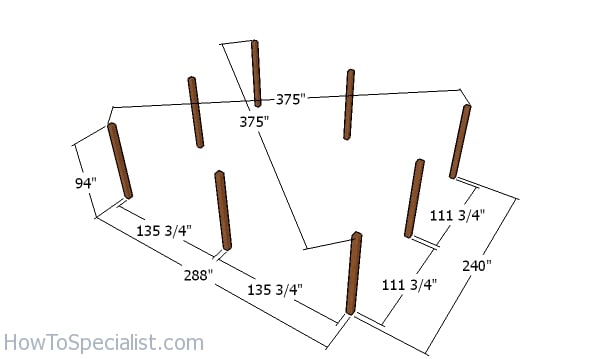
Laying out the posts for the pavilion
The first step of the project is to layout the rectangular pavilion. Therefore, select the location for the pavilion and level the surface with attention. Make sure you remove the vegetation layer and even out the surface. Use batter boards and string to layout the location of the legs. Apply the 3-4-5 rule to each corners, so you make sure they are square. Measure the diagonals and make adjustments so they are equal.
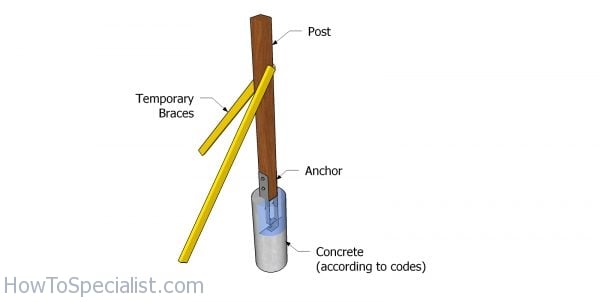
Setting the posts
After marking the location of the posts with spray paint, you need to dig 3-4′ deep holes in the ground, using a post hole digger. Install tube forms and fit the anchors into place, making sure they are perfectly plumb. Secure the 6×6 posts with braces.
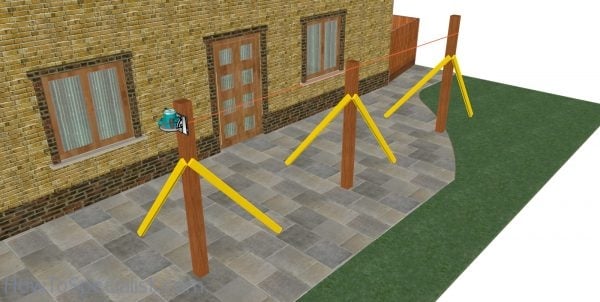
Cutting the top of the posts
In most cases, you won’t be able to have the top of the posts level from the very beginning. That is necessary to use a laser level and cut the top of the posts so they are perfectly horizontal one with another. Use a circular saw and a ladder to get the job done. smooth the top with a rasp or sandpaper.
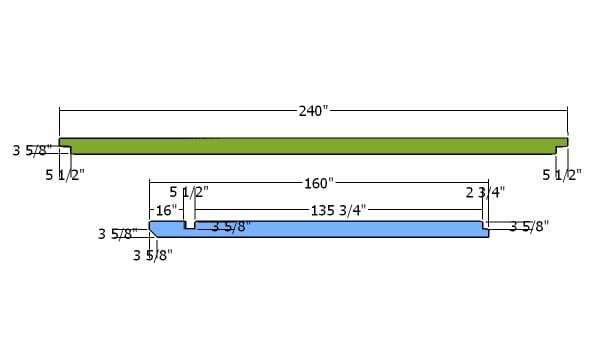
Plates for large wood pavilion
Use 6×8 lumber for the top plates. As you can easily see in the diagram, you need to make notches to both ends of the cross-beams, using a circular saw. Make the notch inside the side beams. Make the middle notch to the side plates using a saw and a chisel. Make parallel cuts and then remove the excess with a hammer and a chisel. Smooth the recesses with sandpaper.
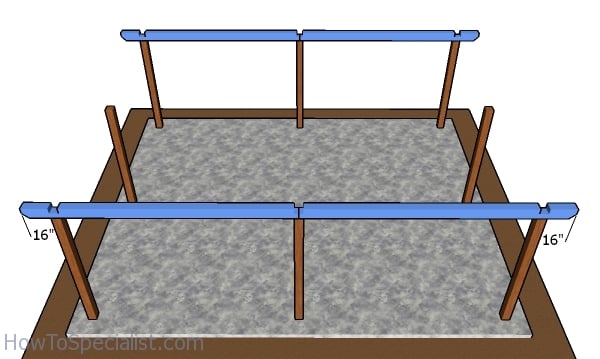
Fitting the side support beams
Fit the plates to the sides of the pavilion. Center the plates to the posts, making sure you have 16″ overhangs on both sides. Drill pilot holes and insert 8″ screws to lock them into place. Plumb the posts with a spirit level and check if the top plate is perfectly horizontal. Make sure the corners are square. Align everything with attention and leave no gaps between the components.

Fitting the cross beams to the pavilion
Fit the cross-plates to the top of the pavilion. Drill pilot holes and insert 8″ screws, to assemble everything together tightly.
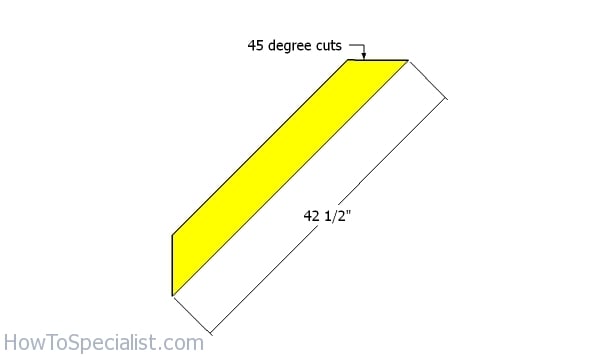
Braces for pavilion
This structure needs 6×6 diagonal braces to handle the longitudinal and lateral movement. Use a circular saw to make 45 degree cuts at both ends of the braces.
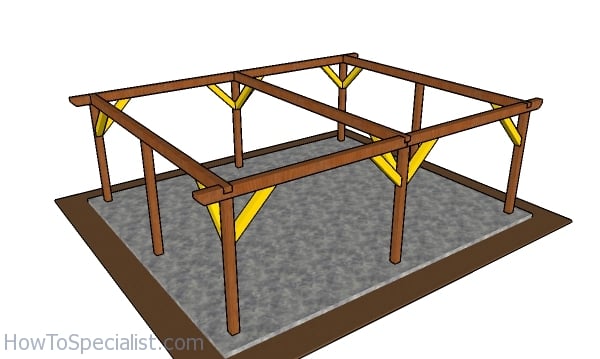
Fitting the braces – 20×24 pavilion
Plumb the posts and check if the plates are perfectly horizontal. Fit the braces to the frame of the pavilion. Drill pilot holes and insert 5″ screws to lock the braces to the posts and top beams.
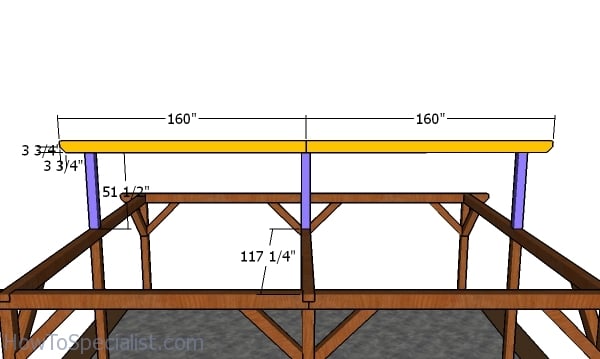
Fitting the ridge beam – large backyard pavilion
Use 6×6 lumber for the ridge beams supports. Use 6×8 lumber for the ridge beam. Use post to beam connectors to secure the supports into place tightly. Use a spirit level to plumb the supports and then attach the ridge beams, using the post to beam connectors.
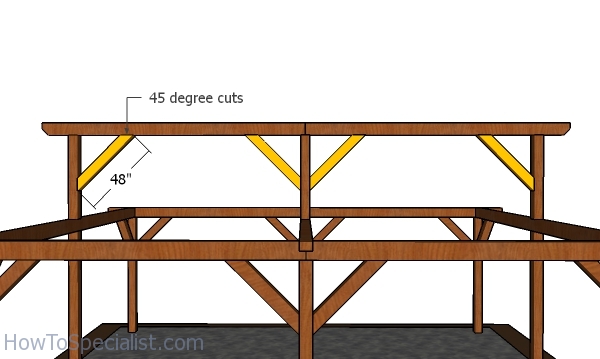
Diagonal braces for ridge beam
Use 6×6 lumber for the ridge beam diagonal braces. Use a saw to make 45 degree cuts to both ends of the braces. Fit the braces to the frame of the pavilion, drill pilot holes and insert 5″ screws to assemble everything together tightly. These braces will make the roof frame more rigid.
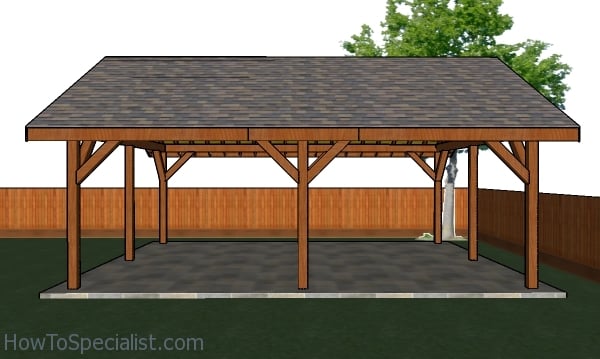
20×24 pavilion plans – Free pdf download
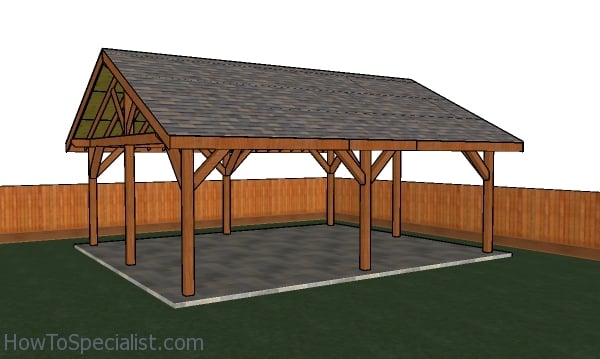
20×24 Pavilion Plans
There is PART 2 of the plans where I show you how to build the gable roof for the pavilion. In addition, I have lots of other pavilion plans and projects on my blog, so you might as well check the 14×16 pavilion plans.
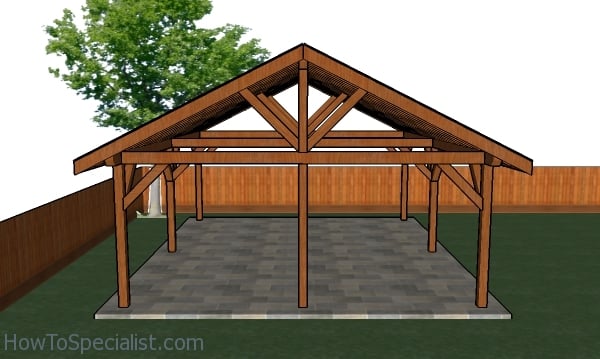
How to build a 20×24 pavilion
Last but not least, you need to take care of the finishing touches. Therefore, fill the holes with wood putty and then smooth the surface with sandpaper. Apply a few coats of paint or stain over the components to enhance the look of the shed and to protect the components from decay.
If you want to download the plans. just click on the GET PDF PLANS button bellow.
Thank you for reading my project about 20×24 rectangular pavilion plans and we recommend you to check out the rest of the projects. Don’t forget to LIKE and SHARE our projects with your friends, by using the social media widgets. SUBSCRIBE to be the first that gets our latest projects.


8 comments
Encuentro muy interesante el proyecto.
I would like to download and print the “20 x 24 Pavillion – Free DIY Plans”. However, when I select the “get pdf plans Gumroad” button, the plans cost $9.99. Are these the same plans as the read-only (no obvious download) plans online?
Sorry for my confusion!
Julian Heilman
You have the answer to your question in the site FAQs. Read that with confidence.
Yeah, not free. Now the price is 7.99.
Yeah, free. It’s free online. If you want the PDF file without ads and in 1 file, you have to pay. If that’s over your budget, or you don’t like the plans, none forces you to buy the PDF file.
Awesome outline! This is very informative. Roughly how much does it cost to build a pavilion following these plans?
Probably 7500 usd
I’m trying to get an idea of how much this’ll cost to build with rough cut lumber. The material list is covered by an add that I can’t remove. Can I get the list please?